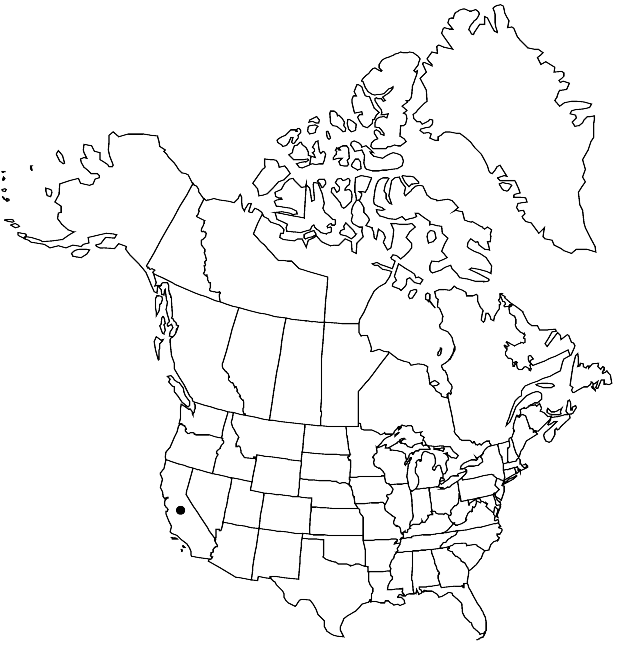Draba monoensis
Aliso 12: 22, figs. 1f–j, 3. 1988.
Perennials; (usually cespitose); caudex simple or branched (poorly developed, with persistent leaf remains); sometimes scapose. Stems unbranched, (0.05–)0.1–0.4 dm, usually pubescent throughout, rarely sparsely pubescent or glabrous distally, trichomes simple and 2-rayed, (often crisped), 0.1–0.6 mm. Basal leaves rosulate; subsessile or shortly petiolate; petiole margin ciliate or not; blade narrowly oblanceolate, (0.3–)0.5–1.6(–2) cm × (1–)1.5–3(–4) mm, margins usually entire, rarely subapically denticulate, (ciliate or not), surfaces pubescent with simple and stalked, 2-rayed trichomes, 0.1–0.7 mm, (midvein obscure abaxially). Cauline leaves 0–2 (or 3); sessile; blade ovate to oblong, margins entire, surfaces pubescent as basal. Racemes (3–)6–13(–17)-flowered, ebracteate or proximalmost 1 (or 2) flowers bracteate, not or slightly elongated in fruit; rachis not flexuous, usually pubescent as stem, rarely glabrous. Fruiting pedicels divaricate-ascending, straight, 1–2.5(–4) mm, usually pubescent as stem, rarely glabrous. Flowers: sepals (persistent), oblong, 1–1.5 mm, subapically sparsely pubescent, (trichomes simple); petals white, spatulate, 1.5–2 × 0.5–0.6 mm; anthers ovate, 0.15–0.2 mm. Fruits ovoid to subellipsoid, plane, slightly inflated basally, (2–)3–5 × (1.2–)1.5–2.5 mm; valves usually puberulent, rarely glabrous, trichomes simple, 0.05–0.2 mm; ovules 12–20 per ovary; style 0.1–0.2 mm. Seeds ovoid, 0.6–0.8 × 0.4–0.6 mm.
Phenology: Flowering Jul–Aug.
Habitat: Gravelly alpine meadows
Elevation: 3600-4000 m
Discussion
Of conservation concern.
Draba monoensis appears to be polyploid (M. D. Windham, unpubl.), and its morphological similarity to D. fladnizensis (R. C. Rollins 1993) may indicate that the latter is one of its progenitors. The species is known from the White Mountains of Mono County.
Selected References
None.
